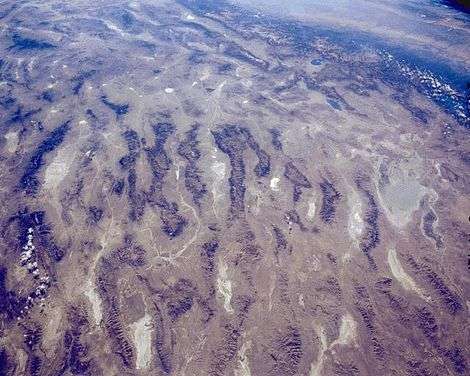Basin and range topography
Not to be confused with Basin and Range Province.

Basin and range topography has alternating parallel mountain ranges and valleys
Basin and range topography results from crustal extension (extensional tectonics). As the crust stretches, faults develop to accommodate the extension.
For example, in the western United States, this topography is built by a number of normal faults that meet at a basal detachment fault. The basins are down-fallen blocks of crust and the ranges are relatively uplifted blocks, many of which tilt slightly in one direction at their tops due to the motion of their bottoms along the main detachment fault.
The normal arrangement in the basin and range system is that each valley (i.e., basin) is bounded on at least one side by one or more normal faults that are oriented along, or sub-parallel to, the range front.
Examples
See also
References
External links
This article is issued from Wikipedia - version of the Tuesday, October 20, 2015. The text is available under the Creative Commons Attribution/Share Alike but additional terms may apply for the media files.